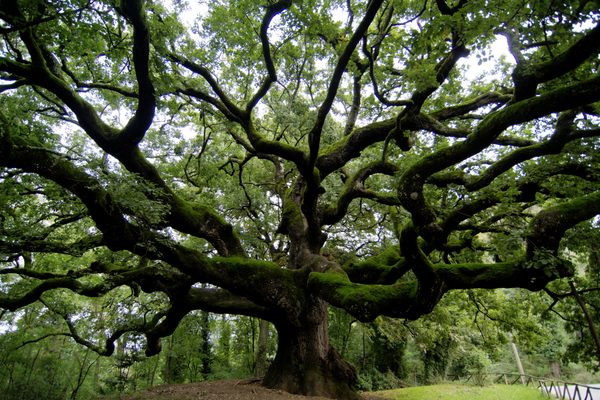Built of red brick and topped by several ancient Holm oaks, the 125 foot high Guinigi tower house is one of the few remaining tower houses in Lucca. It was built in or around 1384 by wealthy silk merchants, and, although no one know exactly how old the rooftop garden is, it dates back to at least 1600 when it appears in a contemporary drawing of the city.
Once bristling with as many as 250 defensive tower houses, today, only about 9 remain in the ancient walled city . The towers were built during the mercenary-filled post-plague years in Italy, when Tuscany was repeatedly turned upside-down by disease, raids, and outbursts of politically charged violence. The 14th century in Italy was, as they say, Interesting Times. It made sense to have a personal defensive tower.
The center of Lucca dates back to Roman times, but it found its stride during the middle ages as a crossroads of trade and a center of the silk trade. Independent since 1119, in 1314 Lucca was raided and fell under the power of a local born condottirere, or mercenary, Castruccio Castracani. Ambitious and ruthless, Castracani set his sights on conquering more land including nearby Florence, and spent the remainder of his rule making war on the neighbors (his life story was documented in detail by Machiavelli).
Following his death, rule of the town fell to the Guinigi family. As in nearby Pisa, Sienna, and Florence, the wealthy landowners began building a tower onto their palace home, both as an overt manifestation of their wealth and power, but also as a defensive position and lookout when things got rough. Throughout Tuscany, the shape of crenellations on the top story often indicated the loyalty of the owner. The tower building mania became enough of an issue that many Tuscan towns established building limits on height and style of the towers. In battles, destruction of the towers - often specifically targeted properties of certain families - was common, and a blow to the pride of the victimized town thereafter.
Napoleon raided Tuscany in 1805, annexed it to France, and gave Lucca to his sister Elisa in 1809. She held on to her title of Grand Duchess of Tuscany until 1 February 1814. She can be credited with the beautifully maintained outer walls and the trees planted along them.
Restored and reopened in the 1980s, today the tower’s rooftop garden is accessible via a climb of 230 stairs (a modern addition - the original stairs were on the outside). From the rooftop you can see the outlines of the three concentric city walls, the Roman center of town, and the few remaining other towers. Across town, the Torre della Ore (clock tower) is also open for climbing.
Similar Towers of the era can be seen in nearby Sienna and San Gimignano.




























Follow us on Twitter to get the latest on the world's hidden wonders.
Like us on Facebook to get the latest on the world's hidden wonders.
Follow us on Twitter Like us on Facebook